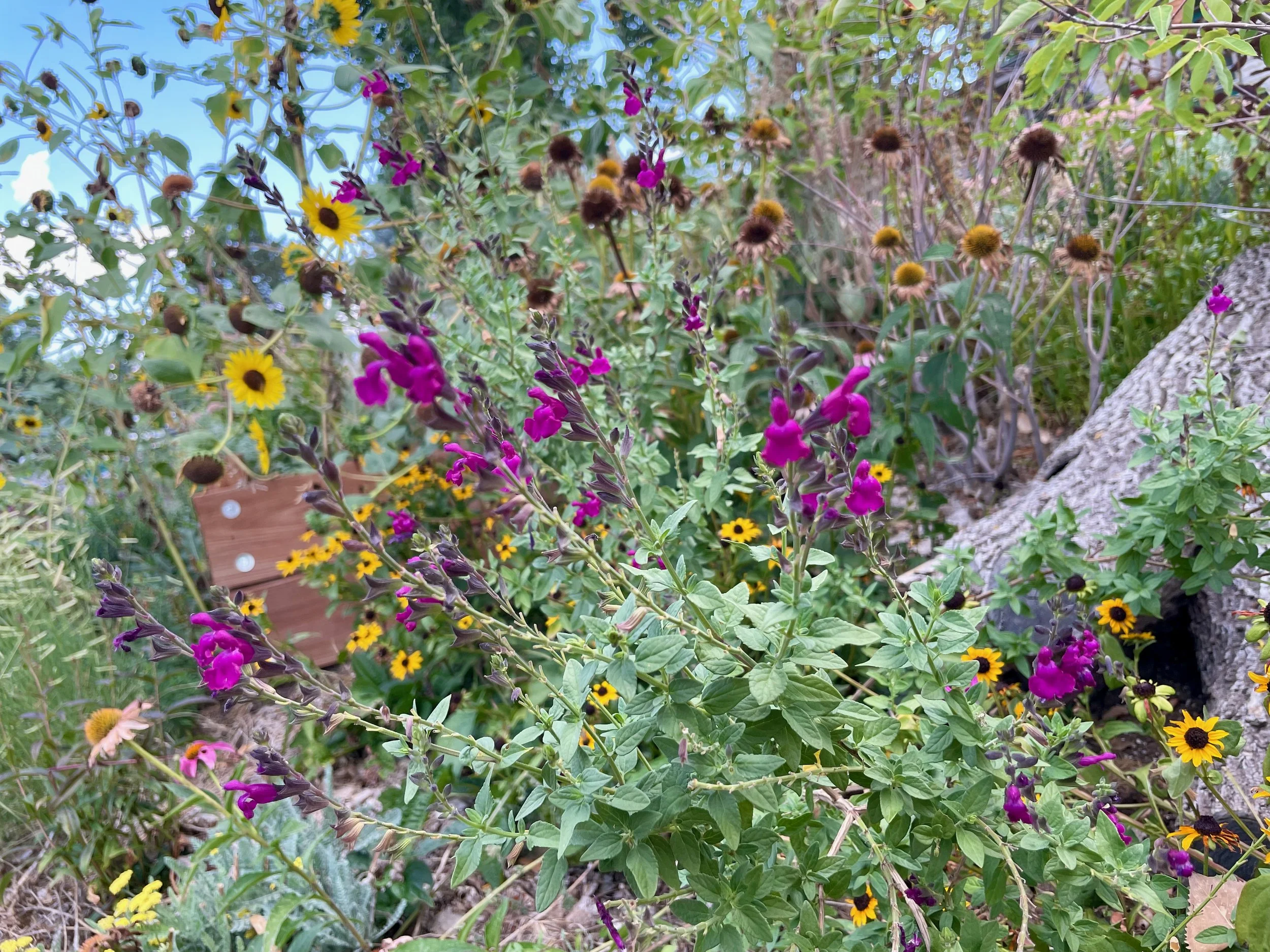The Power of Threes: How Grouping Plants Enhances Pollination
& Garden Design
Today’s Resistance Gardening Tip makes garden design a little easier and makes your garden better for pollinators.
When you buy a plant, never buy one. Buy at least three.
Why? Ok. Let’s begin with the resistance gardening part: we are feeding the pollinators and providing habitat in our gardens as a way of countering the ecological disasters perpetrated by this regime. When you plant in groups of three, you are expanding on the availability of food and shelter that a plant provides. So, for example, if you plant a single Monarda plant, and the hummingbirds love it, they have to expend more energy getting to another nectar source nearby. Where if you have three of that plant together, hummingbirds and wildlife don’t have to search as far and are able to conserve energy in their quest for food. That’s especially important for these little creatures who need a lot of high-quality food — nectar and pollen — to survive.
Most pollinators and wildlife are somewhat specialized. They may need tubular flowers to be able to sip deeply like a hummingbird or a hawkmoth. Or flat umbellifers upon which to land for rest and to drink like many butterflies. Perhaps they thrive on large-headed flowers packed with nutrients like a sunflower — the autumn prize for a nuthatch. Few creatures are generalists and are able to partake of just any flower or leaf. So when you attract those native bumblebees or butterflies or hummingbirds, you want to provide enough nutrition to make their journey to your garden worthwhile.
You need a banquet — not just a tasting menu.
Of course, when choosing the plants for your garden, we want to choose for a diversity of options. A banquet is more than just one or two specialties! But repeating plants across that banquet — planting in groups of 3 or 5 of the same plant ensures that the wildlife visiting your garden have enough to enjoy.
Choosing to plant in groups of 3 or 5 also makes garden design a little easier! Those big swathes of plants across a landscape are appealing both to wildlife and to the humans who interact with the garden.
When I designed my Wildlife Garden, this was the biggest gardening project I had ever taken on all at once. I was planting more than 1000 square feet of space with nearly 1000 plants. I needed a plan. I had taken Kelly Norris’ design class on Naturalistic planting and had studied the designs of Piet Oudoulf and Noel Kingsbury (amongst many other). And while my planting scheme wasn’t as large as their civic projects tend to be, I applied many of their design principles on a much smaller scale.
When laying out my planting grid — and then the plants themselves — I wanted to ensure that plants were never on their own. Varieties were laid out in groups of at least three plants together within the planting scheme. My intended result: a design that draws the eye across with both variety and harmony in the same space. And the three plant rule helped!
But I use it in other ways in my garden, too, as well as when I shop. I used to buy one each of five plants. Now I buy five of one plant — and make sure they are close enough together that a bee will happily buzz around without using too much energy to do so.
Thinking about bees and their expenditure of energy transformed how I think about planting schemes. While bees are known to travel far from their hives or their homes in the soil, I want to make their trip to my garden as profitable and as simple as I can. So in repeating groupings of the same plants again and again, I am ensuring that they have adequate food to make the trip worthwhile. And I have a pretty garden for wildlife and humans alike.
For more about Wildlife Gardening and my Wildlife Garden, click the button below.
at the close…
Most people don't do a lot of planting here in August, but come September it is time to get back into the dirt. I love planting perennials in September – they have time to stretch out their roots while the soil is still warm and the sun is high enough in the sky. So, as you are planning for the coming months of fall gardening, keep the rule of three in mind.
Cheers!
Angela
Subscribe now so you never miss a thing!




